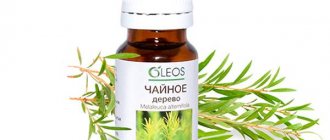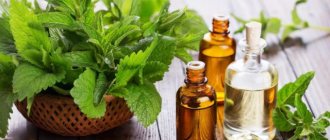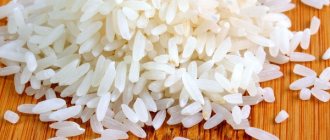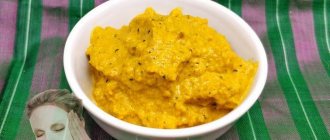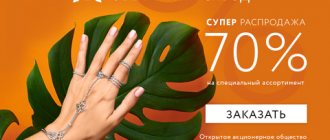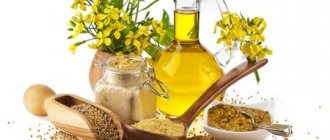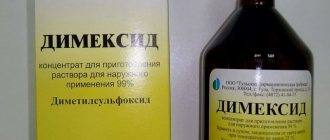Ylang-ylang is a tropical tree native to Asian countries. In some of them, the plant has become part of the culture; in Indonesia, for example, not a single wedding is complete without the flowers of this tree.
It is in the flowers that lies the secret of the popularity of ylang-ylang in cosmetology, perfumery, and aromatherapy. From them, in the process of steam distillation, an essential oil is produced, which has a bright aroma reminiscent of the aroma of jasmine. The chemical composition includes:
- monoterpene alcohols,
- monoterpenes,
- phenols,
- esters,
- organic acids.
Advantages and disadvantages
In addition to being used in products for the face and hair growth, as well as in perfumes, this drug has many other properties:
- aphrodisiac
- antidepressant
- antiseptic (fights a wide variety of bacteria, fungi, viruses, etc.)
- lowers blood pressure
- treats the gastrointestinal tract
- normalizes pulse
- relieves migraines
- eliminates cramps
- regulates blood circulation and makes blood vessels more elastic and dilates them
- calms and relaxes the nervous system
- helps fight lice and other parasites
- makes the consequences of insect and snake bites less painful
drawback is its certain toxicity, which manifests itself when large dosages are used. This product is added to sweets and drinks, but after heat treatment it can give dishes a bitter taste. At high concentrations it can cause headaches and nausea.
Contraindications
Essential oil has a high concentration of active components. In this regard, the product has the following contraindications when used on the face:
- Hypotension. The fact is that the smell of the product provokes a decrease in blood pressure.
- Allergy to one or more components of the chemical composition of the ester.
- Age less than 11 years.
- Carrying a child and breastfeeding. During these periods, a woman should be extremely careful about any external influences, including the use of essential oils.
It should also be taken into account that if you have skin diseases, you should consult a dermatologist before using the oil. A specialist will determine exactly whether the squeeze can be used in your case.
What are the benefits for the skin
In addition to the exotic aroma and the ability to improve blood circulation (which is necessary for the health and beauty of the skin), this product has many other properties, which is why it is actively used in cosmetology for the face, body, hair and nails:
- Suitable for soothing irritated and dry skin;
- soothes overactive sebaceous glands of oily skin;
- normalizes the condition of mixed skin;
- relieves inflammation and irritation of various origins;
- prevents the skin from aging;
- needed to stimulate the growth of new dermal cells;
- reduces acne;
- “evens out” the skin, making it velvety and elastic;
- reduces symptoms of dermatoses and eczema;
- makes the tan more even and lasting;
- relieves dilation of capillaries and blood vessels, that is, hyperemia;
- prevents sunburn and irritation after tanning;
- suitable for strengthening nails;
- tightens and makes the breasts more elastic;
- stops the fall of leaves on the head;
- suitable for porous skin;
- makes brittle and thin hair stronger.
Properties
Cananga flower oil has a complex and varied composition, it contains:
- a rich set of organic acids that enhance the protective functions of the skin and stimulate cell renewal processes;
- phenols - substances that tone the walls of blood vessels, stimulating blood circulation and thereby improving cell nutrition;
- organic esters that stimulate the skin’s ability to self-rejuvenate, giving the epidermis a velvety and healthy color;
- m onoterenes and monoterpene alcohols , which have pronounced antiseptic properties.
| Showbiz news In a new interview, Sofia Rotaru shared her amazing secrets of beauty, long youth and creative plans. Read more… |
Use for cosmetic purposes
For hair
In the Victorian era, ylang-ylang oil was a popular remedy for hair loss and baldness. Today, its use for such purposes has not lost its relevance: the product perfectly strengthens follicles, saves from dandruff and split ends, and in general, is universal: suitable for dry hair, oily hair, gray hair, light hair, and dark hair. , and for colored ones, and for growth, and for thickness. The same Filipinos use it in combination with coconut and palm oil. There are other recipes.
- So, if the braids are weakened and dry, you can massage it. For it you need base oil, any (castor, coconut, almond, burdock, sea buckthorn, jojoba) and a teaspoon of ylang-ylang. Rub into the roots for about 20 minutes, then distribute throughout the hair and ends, cover with a shower cap and rinse off after two-thirds of an hour.
- A few drops of the drug can be applied to a comb (preferably made of wood) and aromatherapy is used: this is both beneficial for the growth of curls and aromatherapy at the same time.
- You can also rinse your hair after washing with a mixture of five drops of ylang-ylang, lemon juice (a teaspoon) and a liter of the purest water. Masks are made the same way as any other: applied to a dry head, spread and rubbed in, after which the head is covered with cellophane and a thick hat. It all washes off after two-thirds of an hour.
- You can “feed” and regenerate dry curls with crushed avocado pulp (250g), to which three drops of chamomile and ylang ylang oils are added.
- To quickly grow long braids, you will need 10 ml of camellia oil, as well as three drops each of rosemary, lemon and ylang-ylang. Keep covered with film and a thick towel for half an hour to an hour. Rinse off as usual.
- In case of hair loss and to renew growth, you can try rinsing: add sandalwood oil (18 drops) and ylang-ylang (7 drops), as well as apple cider vinegar (15 ml) and aloe juice (30 ml) to a liter of well-purified water. Use after washing heads twice a week.
Aroma combing:
For skin
- Ylang ylang oil for the face can be used in masks, to enrich store-bought products, in tonics and lotions, for massages, etc. But you cannot apply it in its pure form . It is also prohibited for the product to come into contact with the mucous membranes of the eyes and it is not recommended to use it for asthma and allergies.
- If your skin is dry, you can use melon or banana pulp for the base of the mask, which is mixed with three drops of aroma oil. Leave for 20 minutes and rinse well.
- Also, for dry skin, you can add three drops of the drug to the olive oil base (a tablespoon)
- For problem skin and acne, a jojoba base (also a tablespoon) is suitable, to which three drops of ylang ylang are added. Let it sit for a quarter of an hour, and don’t forget about your favorite moisturizer afterwards.
- Another option is a base of jojoba plus a couple of drops of lemon and ylang ylang oils. In any case, let it sit for a third of an hour and remove the remains with a paper napkin.
- If the skin is oily, add the same three drops to the strawberry pulp and dilute with a teaspoon of lemon juice. All this lasts for about 20 minutes, the result is fixed with cream.
- You can cleanse your face with finely ground salt (a teaspoon), base oil (preferably peach or grape seed) and a drop of ylang-ylang.
- To rejuvenate, mix a tablespoon of avocado pulp with rosewood oils (a drop) and ylang ylang (2 drops). The same two drops can be added to grated radish and get a mask for rejuvenation.
- For aging skin, three drops of ylang-ylang and a drop each of lemon, neroli and mint are added to a base of almond, linseed and jojoba oil. Pour everything into dark glass and use twice a week ten times.
- You can rejuvenate your face with the same three drops, which are added to a mixture of peach or olive oil (10 ml), the same amount of sour cream and oatmeal, as well as a couple of grams of linden honey. Leave everything for five minutes, mix and apply to the face for a third of an hour. After rinsing, don’t forget about the cream.
- To prepare a universal toning mask, you will need the aroma oils of vetiver, frankincense (three drops each), ylang-ylang (2 drops), sandalwood (teaspoon) and jojoba (10 ml). After a third of an hour, blot the skin with a paper napkin.
This drug is an excellent aphrodisiac . To prepare homemade perfume, five drops of ylang-ylang and rose oil extracts are mixed with two drops of nutmeg. Apply to all pulsating areas of the veins.
Some more uses
- For the aroma lamp, 8 drops of ylang-ylang, lemon and basil oil extracts are dripped into the lamp and left overnight. This improves sleep, relieves stress, and eliminates fatigue.
- For an aroma bath with a calming effect, you need a couple of drops of ylang-ylang and grapefruit, as well as three drops of lavender. It is better to mix them with honey. Water temperature is from 37 to 40 degrees.
- For erotic massage, two drops are added to the base (olive, peach, honey). For a more expressive effect, you can also add five drops of sandalwood oil, four drops of rose oil and one drop of patchouli oil.
- To strengthen and grow nails, the base (olive or any other vegetable oil, a couple of tablespoons) is heated and ylang-ylang oil extract (1 ml) is added. Afterwards, the entire surface of the nails is placed in such a bath and kept for a third of an hour. Can be used several times. The same product can simply be rubbed well into the nail plates and cuticles.
- To enrich shampoo, cream or tonic, only three or four drops of the drug are needed.
- The product is not very suitable for internal use, but it can be added a drop or two to drinks, wines and baked goods. If you add the remedy to tea, you can get rid of insomnia, fear and panic, as well as reduce heart rate, get rid of tachycardia and for sexual arousal. In addition to tea, you can add the product to honey or a piece of sugar.
Video about the properties of ylang-ylang
Combination of ylang-ylang essential oil with others
For massage, ylang-ylang can be combined with almost any base oil.
For aromatherapy it can be mixed with oils:
- citrus fruits (lemon, orange, tangerine, grapefruit);
- Melissa;
- verbena;
- rose;
- geranium;
- jasmine;
- lavender;
- neroli;
- sandalwood;
- patchouli;
- pink tree;
- juniper;
- incense.
Reviews Prices Where to buy
Basically, you can only find positive reviews on review sites, forums and social networks. Our girls appreciated the aroma of this product, its benefits for hair and skin, and its stimulating effect during a massage to a partner. The main thing is to choose a good manufacturer and a quality product. It is most often used to enrich shampoos and hair masks, as well as to scent clothes and bedding.
Proven brands of ylang ylang essential oil:
Ylang Ylang III from Aura Cacia is an inexpensive brand with quality oils. Pure 100% essential oils.
Ylang-ylang oil in the budget price category - the best manufacturers:
- Mirrolla Large volume at the best price.
- Aspera Recommendation from experts: highly effective
- Oleos Large assortment of esters. The composition is the most natural.
The best producers of ylang oil in the price-quality category
1 Bergland-Pharma Production from environmentally friendly raw materials. The best in terms of price and quality.
2 Botanika Customers' choice.
3 Lecus International quality standards. Unobtrusive scents
4 Elfarma Best design. Profitable price
